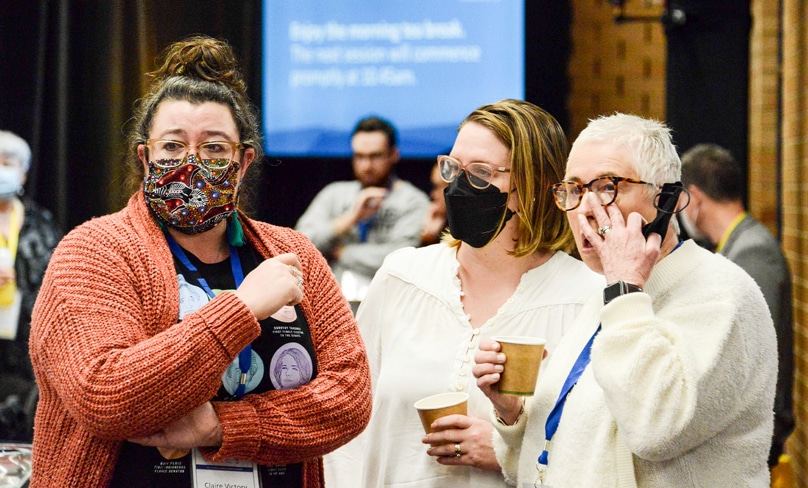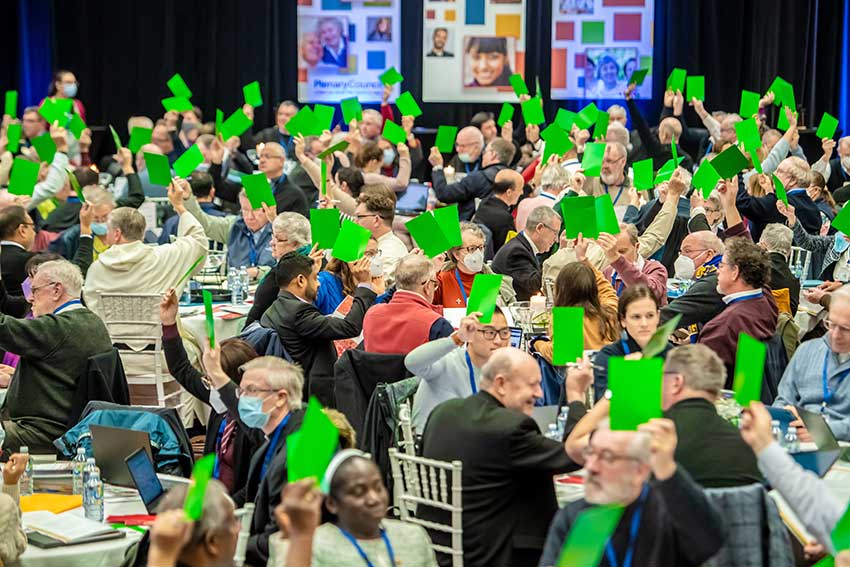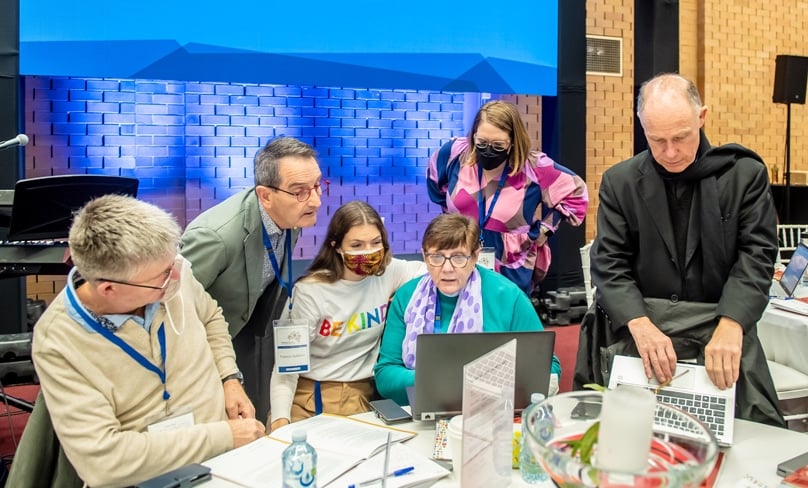
By Fr Gerard Kelly
The apostolic nuncio, Archbishop Charles Balvo, in his address at the closing session of the Plenary Council, noted that many were watching this event in Australia very carefully.
This was because Australia was engaged in a synodal process, and the notion of synodality was unfolding throughout the universal Church.
The Catholic Church’s Synod of Bishops on Synodality opened in Rome in 2021 and will have its final assembly there in 2023. The world was keen to see how Australia modelled what a synodal church might look like.
The Plenary Council was set up according to the canonical norms for plenary councils: approval had been gained from the Holy See; the President had been appointed by the pope; and statutes had been duly written and approved by the Holy See.
But there were factors other than the canonical that were shaping the evolution of the plenary council.
In October 2015 Pope Francis had given an address on the occasion of the 50th anniversary of the institution of the Synod of Bishops. He explained that since the beginning of his ministry as Bishop of Rome he had sought to enhance the Synod.

This meant not only making it more effective, but also allowing the principle of synodality to pervade the whole of the church’s life. The path of synodality, he said, is what God expects of the Church in the third millennium.
Synodality was typical of the life of the ancient church and to this day is still a vital characteristic of the eastern churches. It had virtually disappeared in the western church and was revived by Pope St Paul VI immediately after the Second Vatican Council. Its reappearance is another instance of the universal church once again breathing with both lungs.
In the October 2015 address the pope noted that synodality is a “constitutive element of the Church”. The word “synod” means walking together on the way, and thus refers to the pilgrim people of God journeying together through history towards that final fulfilment and communion with God.
The roots of this are deep in our tradition. We see it in the journey of the people of God out of Egypt, through the desert and into the promised land.
We see it in the gospels as the disciples journey with Jesus, who is the Way, following him to the cross and to his resurrection.
We see it in numerous places in the Acts of the Apostles where Christians were called followers of the Way. So, to be a disciple is to be synodal.

Such journeying is not an aimless wandering. As we see in the apostolic church and in subsequent centuries, it is inherently pastoral.
An early example is the well-known assembly that takes place in Jerusalem (Ac 15) to work out how to deal with the challenge that Gentile membership will bring to a Church that was still a predominantly Jewish community.
The Church at Antioch had sought help from the Church at Jerusalem. Through a process of listening and discernment a decision was made “that seemed good to the Holy Spirit and to us” (Ac 15:28).
In this, we also see the beginnings of the understanding that the Church is a communion of local churches. This principle was very much in evidence at the Fifth Plenary Council of Australia. In the first place, it was a regional gathering, with different parts of the Church assembling. Each local Church (diocese or eparchy) was present, bringing its own experience and history, and ready to learn from the experience and history of others.
Religious communities likewise brought their experience.
But the experience of synodality did not end there. There were observers from neighbouring churches, namely New Zealand (Cardinal John Dew, archbishop of Wellington) and Asia (Cardinal Charles Bo, archbishop of Yangon, Myanmar, and President of the Federation of Asian Bishops Conferences).

The apostolic nuncio brought a direct link to the pope. Another observer was Dr John Gilmore, president of the National Council of Churches in Australia.
None of the observers at the plenary council had a vote or contributed to the conversation on the floor of the assembly. However, they brought greetings from their local churches, for whom what we were doing was important.
Their presence was a constant reminder that the plenary council was indeed a synodal gathering, not focused solely on itself, but aware that its actions were for building up the communion of the whole Church.
Throughout the week of the plenary council, the members learnt the truth of the words of the pope in his October 2015 address, namely that “synod” is an easy concept to put into words, but not so easy to put into practice.
The starting point for synodality is listening – listening to the Holy Spirit by listening to one another. The presumption must be that the other person has something to say that is true and good and important.
Moreover, as the pope said in his Pentecost homily this year, “oddly, the Holy Spirit is the author of division, of ruckus, of a certain disorder. … He creates division with charisms and he creates harmony with all this division”.

This goes counter to the prevailing modes of operation in a society like ours. In recent years, we notice a growing intolerance of views that are not like mine. They call it “cancel culture”. With synodality, all views are listened to carefully.
Societies like ours are also used to parliamentary debate as the mechanism for reaching decisions and making laws. The success of this system relies on an adversarial model and counting the votes.
The synodal path is not adversarial; it is not about winners and losers. It is about discerning, from the midst of different voices with often conflicting opinions, where the Holy Spirit is leading, and what is the step to take at this moment on the journey as the people of God.
The evolution of this understanding became clearer as the week progressed. Bishop Shane Mackinlay, the vice president of the plenary council, would often remind the members as they were about to vote that this wasn’t the last word, but something that would allow the Church to move forward at his moment. This is about consensus building.
In a synodal church, decisions are taken as an act of communion. The plenary council was a regional gathering, but also part of the communion of the whole church. The decrees of the plenary council will now go to the Holy See for a recognitio (recognition) by the pope.
This is another principle of synodality. It involves the exercise of the sensus fidei of “all”, the ministry of leadership of the bishops (“some”); and the ministry of unity of the Bishop of Rome (“one”).
Over the week of the second assembly, Australia was learning, and we will continue to learn. And we can be confident that the plenary council has enhanced the appreciation of synodality in the world church.
Fr Gerard Kelly is a lecturer in Theology at the Catholic Institute of Sydney
